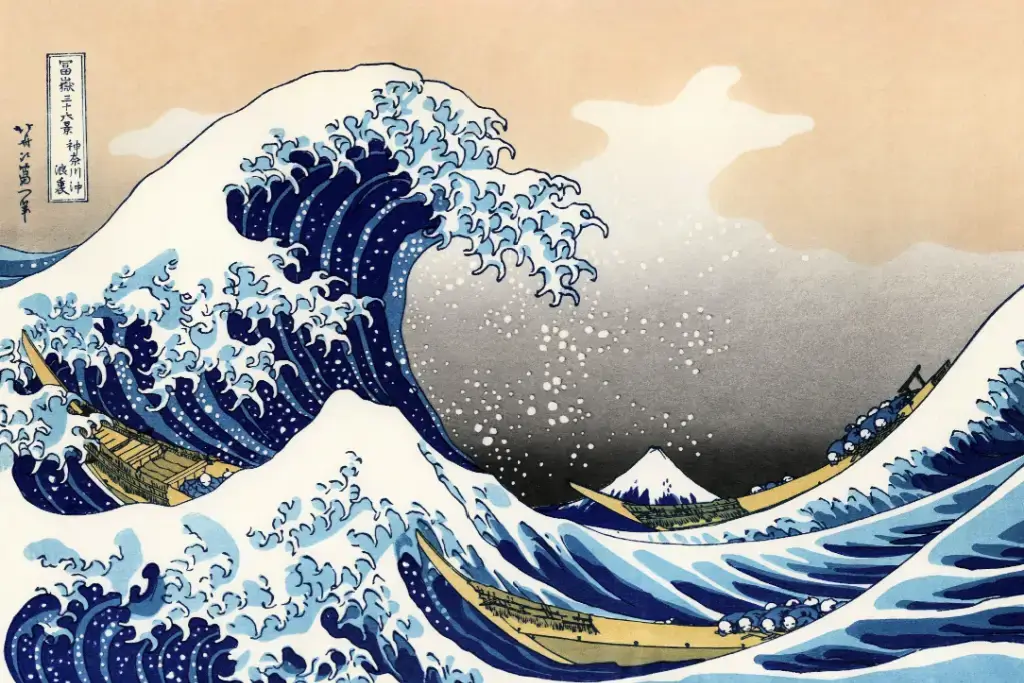If you love Hokusai and Scottish culture, this opera is for you. The Great Wave is a new Hokusai-themed opera by Japanese composer Dai Fujikura. The libretto is by Scottish writer Harry Ross, in collaboration with Scottish Opera. Today, we’ll examine the historical and cultural legacy of Hokusai and his daughter Oi, as well as what to expect from the performance.
Table of Contents
ToggleIntroducing The Great Wave: A New Hokusai-Themed Opera
The Great Wave is a new opera by Japanese composer Dai Fujikura, with a libretto by Scottish writer Harry Ross, and a joint production with Scotland’s Scottish Opera. This large-scale international collaboration celebrates the long cultural connection between Scotland and Japan. Baritone Daisuke Ohyama plays Hokusai, and Julieth Lozano Rolong plays his daughter Oi.
Stuart Stratford conducts The Orchestra of Scottish Opera, joined by the historic sounds of a Japanese shakuhachi flute. The Chorus of The Great Wave brings the teamwork of Edo-era printmaking to life on stage. It seamlessly blends music, story, and drama into a single, captivating performance. Shows will be held at the Theatre Royal, Glasgow, on 12th and 14th February 2026, and at the Festival Theatre, Edinburgh, on 19th and 21st February 2026. All performances start at 7:15 pm.

Meet the Creative Team Behind The Great Wave
The Great Wave brings together the talents of Japanese composer Dai Fujikura and Scottish librettist Harry Ross to create a bold, international opera. Fujikura was born in Osaka in 1977 and moved to the UK as a teenager to study music. He blends Japanese influences with the experimental spirit of European contemporary composition. His works are performed globally, blending traditional Japanese performers and visual arts, while his vocal writing employs subtle and dramatic techniques.
Harry Ross brings storytelling to the forefront, writing libretti and lyrics that blend music, theatre, and visual performance. He has led immersive productions at institutions like the Royal Opera House and co-founded Secret Cinema to engage audiences in innovative ways. In The Great Wave, Ross’s writing brings the story to life, connecting audiences across cultures and generations.
Hokusai and His Daughter Oi: The Story Behind The Great Wave
Katsushika Hokusai (1760–1849) is best known for his famous print, “The Great Wave off Kanagawa”. His family life, especially his relationship with his daughter Oi, adds another layer to his story. Born in Edo (modern Tokyo), he spent decades creating thousands of paintings, illustrations, and prints that shaped Japanese art.
Oi inherited her father’s remarkable talent. She trained under him from a young age, learning brushwork, composition, and the freedom to explore her own style. She became a skilled painter, focusing on women and narrative scenes. Her work exhibits elegance, subtle emotion, and technical precision that complements her father’s bold, dramatic style.

Their relationship blended collaboration and challenge. Oi often helped her father in his studio, finishing works he had begun, while also pursuing her own artistic path in a society that limited opportunities for women. Their shared passion for art created a deep bond and fueled both of their creativity.
The opera The Great Wave brings this story to life on stage. It highlights the connection between father and daughter, their shared passion for art, and the emotions that underlie his creations. Audiences will witness the visual drama of the artist’s waves and experience the personal emotions, ambitions, and inspirations that shaped his life and that of his family.
Are you looking for great snacks to enjoy after watching a live performance? Check out Sakuraco! Sakuraco delivers classic Japanese teas, ceramics, and sweets from local Japanese businesses straight to your door!
Oi’s Legacy: The Lasting Impact of Hokusai’s Daughter on Japanese Art
Oi’s work left a quiet but lasting impact on Japanese art. She explored themes that were less common for male artists of her time, such as the daily lives of women, intimate portraits, and subtle emotional moments. Her paintings reveal a refined eye for detail and composition, capturing feelings and stories in ways that felt personal and relatable.
She also challenged the norms for women artists in Edo-period Japan. While many talented women remained anonymous or worked solely as assistants, Oi maintained her own artistic voice. Her dedication and skill allowed her to create original works that reflected her perspective, not just her father’s influence.
In recent years, she has received growing recognition. Exhibitions of her paintings showcase her talent and highlight her contribution to Japanese art history. Art historians and audiences alike are beginning to appreciate her innovative approach, which blends technical mastery with emotional nuance.
The opera celebrates Oi’s creativity and independence. By focusing on her perspective, the production gives audiences a chance to see her as a pioneering artist, not only Hokusai’s daughter. Her story reminds us that many artists, especially women, have shaped art history in ways that are only now being fully recognized.

Why is this Hokusai-themed opera important?
The Great Wave brings the artist’s art and his family story to life on stage. By focusing on Hokusai and his daughter Oi, the opera highlights the creativity and contributions of women artists in Edo-period Japan. Composer Dai Fujikura blends Japanese and European musical traditions, while librettist Harry Ross tells a story that connects audiences across cultures and generations.
The production showcases the power of collaboration, with musicians, singers, and visual elements working together seamlessly, much like Edo-era printmakers. Premiering in Scotland with Scottish Opera, this international partnership celebrates the exchange between Japanese and Scottish culture. The Great Wave demonstrates how music, storytelling, and history can inspire audiences, connect people, and make the legacy of Hokusai and Oi resonate today. What’s your favorite opera? Let us know in the comments below!











